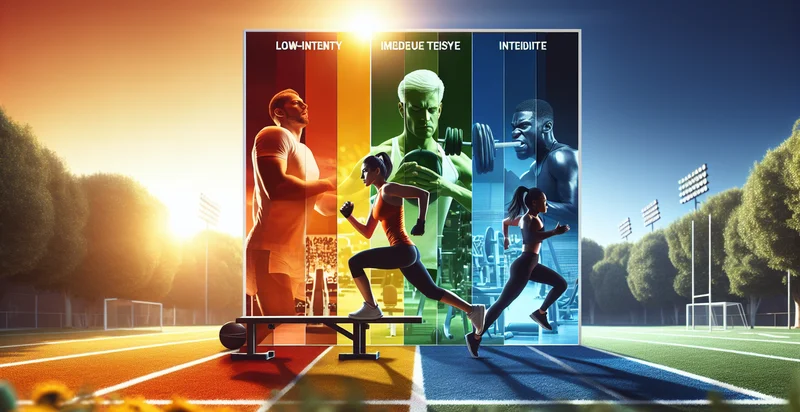Identify workout intensity levels
using AI
Below is a free classifier to identify workout intensity levels. Just upload your image, and our AI will predict the level of workout intensity it represents - in just seconds.

Contact us for API access
Or, use Nyckel to build highly-accurate custom classifiers in just minutes. No PhD required.
Get started
import nyckel
credentials = nyckel.Credentials("YOUR_CLIENT_ID", "YOUR_CLIENT_SECRET")
nyckel.invoke("workout-intensity-levels", "your_image_url", credentials)
fetch('https://www.nyckel.com/v1/functions/workout-intensity-levels/invoke', {
method: 'POST',
headers: {
'Authorization': 'Bearer ' + 'YOUR_BEARER_TOKEN',
'Content-Type': 'application/json',
},
body: JSON.stringify(
{"data": "your_image_url"}
)
})
.then(response => response.json())
.then(data => console.log(data));
curl -X POST \
-H "Content-Type: application/json" \
-H "Authorization: Bearer YOUR_BEARER_TOKEN" \
-d '{"data": "your_image_url"}' \
https://www.nyckel.com/v1/functions/workout-intensity-levels/invoke
How this classifier works
To start, upload your image. Our AI tool will then predict the level of workout intensity it represents.
This pretrained image model uses a Nyckel-created dataset and has 5 labels, including High, Low, Moderate, Very High and Very Low.
We'll also show a confidence score (the higher the number, the more confident the AI model is around the level of workout intensity it represents).
Whether you're just curious or building workout intensity levels detection into your application, we hope our classifier proves helpful.
Related Classifiers
Need to identify workout intensity levels at scale?
Get API or Zapier access to this classifier for free. It's perfect for:
- Personalized Workout Programs: This function can be integrated into fitness apps to tailor workout programs based on the user’s workout intensity levels. By evaluating how intense a user exercises during their routines, the app can suggest appropriate modifications that align with their fitness goals, ensuring optimal progression.
- Enhanced User Engagement: Fitness platforms can utilize the intensity level identifier to gamify user experience. By tracking and displaying users' intensity levels over time, these platforms can foster competition, unlock achievements, and encourage users to push their limits.
- AI-driven Coaching: Personal training apps can employ this function to adapt coaching tips in real time, providing immediate feedback on workout intensity. This allows virtual trainers to adjust suggestions based on real-time data, improving the effectiveness of remote training and user satisfaction.
- Injury Prevention: Gyms and personal trainers can implement the intensity levels identifier to monitor clients during workouts, alerting them if their intensity exceeds safe thresholds. This proactive approach minimizes the risk of injuries, making workouts safer and more enjoyable.
- Tailored Marketing Campaigns: Fitness brands can leverage workout intensity data to segment their audience for targeted marketing. By understanding the intensity levels users prefer, businesses can create more personalized advertising strategies for products like equipment, supplements, or clothing.
- Workout Class Optimization: Gyms can analyze intensity data from various classes to determine which ones have the highest engagement levels. Using this data, they can optimize class schedules, create more appealing programs, and even adjust class sizes based on intensity trends to enhance client satisfaction.
- Research and Development: Researchers in health and fitness can utilize the intensity classification function to analyze workout patterns among different demographics. This can contribute to studies on health outcomes related to exercise intensity and help create evidence-based recommendations for fitness programs.


